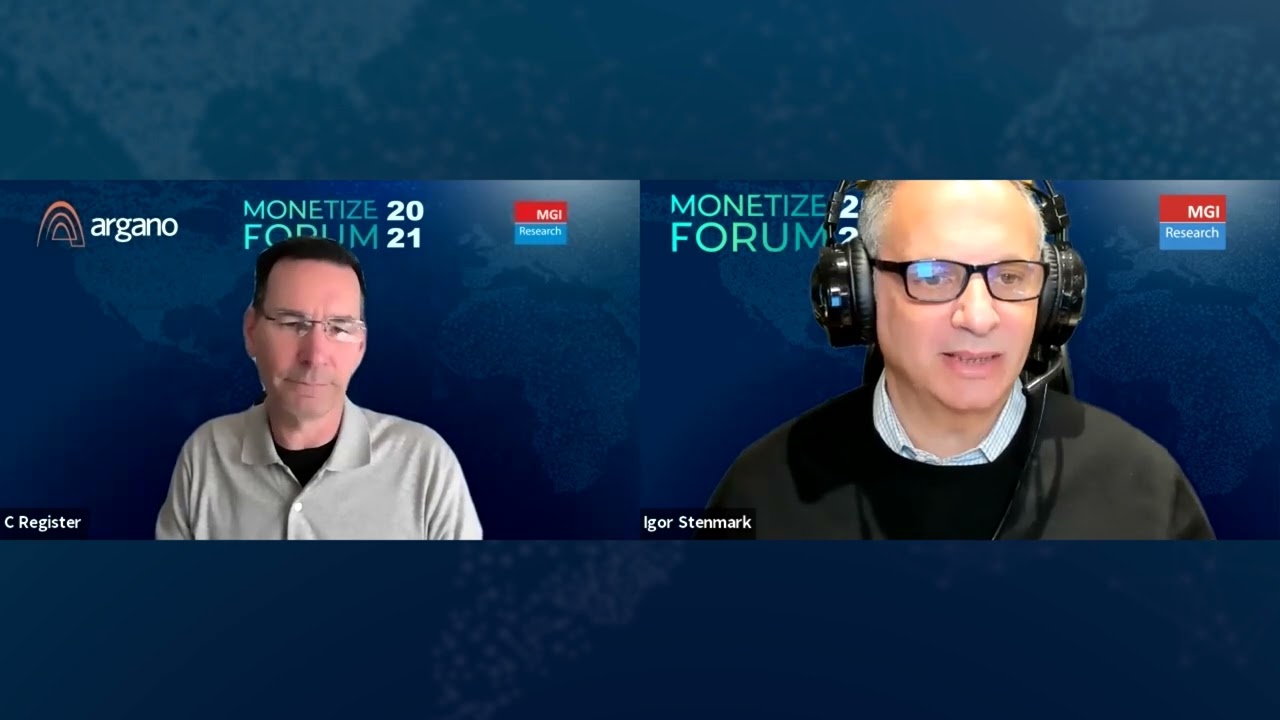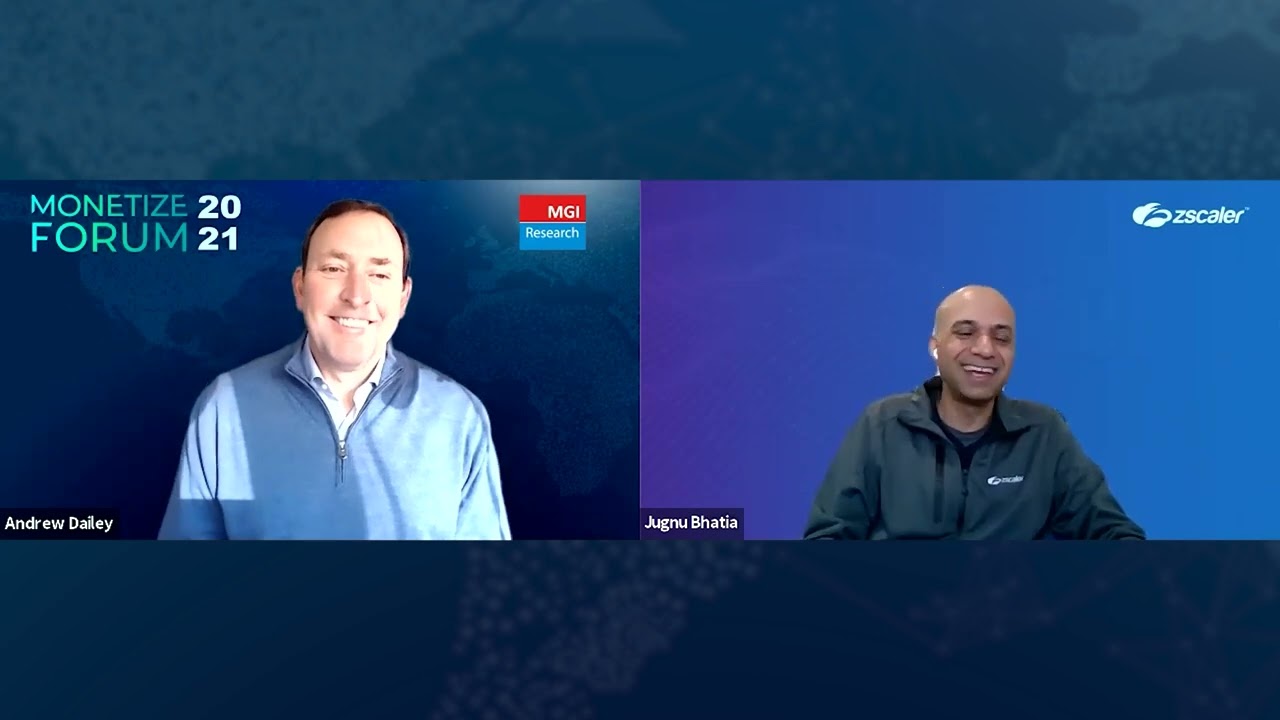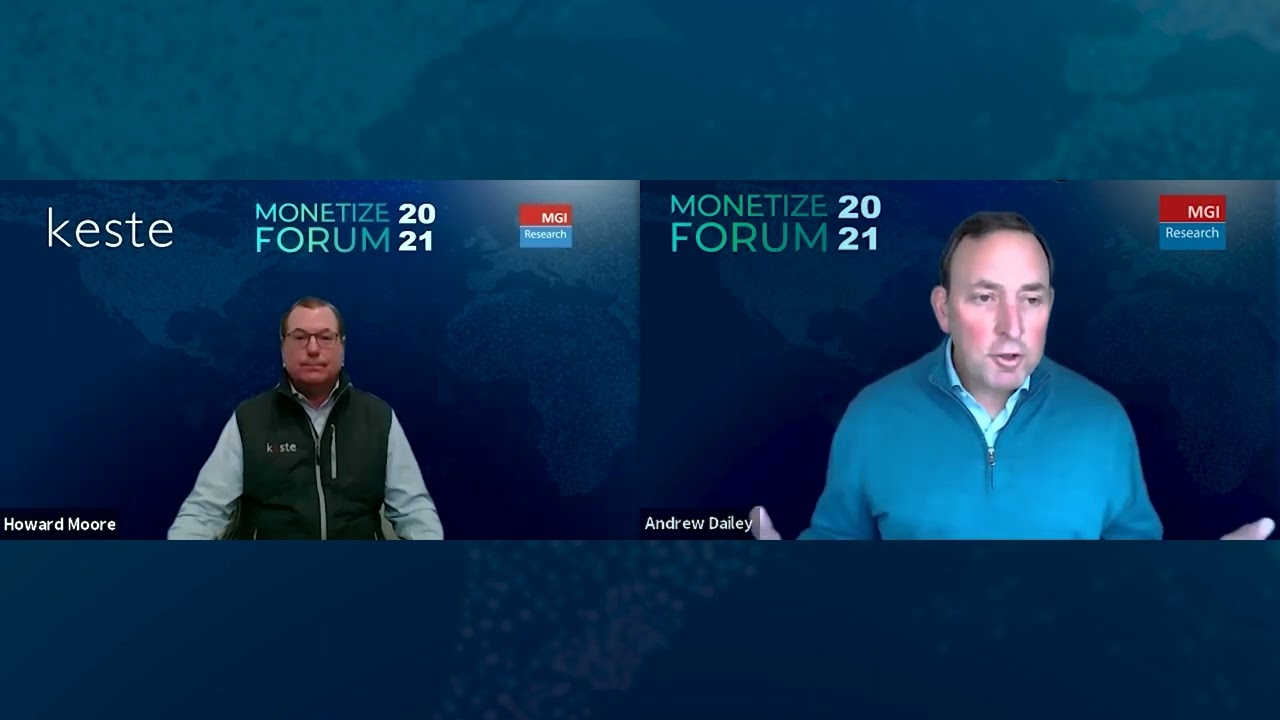The traditional quote-to-cash process aimed to bring together key systems but has become an increasingly sprawling and tangled web of disparate applications. With this mounting complexity, the dream of a simple solution for integration can seem further and further away. We invited Jan Arendtsz, CEO of
integration solutions provider Celigo, to speak at the 2021 Monetize Forum to give us a sense of what companies should expect going into this process. In his conversation with MGI Research analyst Igor Stenmark, Jan both clarifies which very real challenges business leaders should be prepared for and why a solution that combines simplicity and customization may be closer than we think.
Key Issues
Is the traditional view of integration as a monumental effort still valid?
Where, departmentally, does integration live?
How can companies balance the need for pre-built solutions with the desire for flexibility and customization?
Guest Profile
Jan is a veteran of the software industry with more than 20 years of experience in development, product management, client services, and sales. He founded Celigo in 2006 with the goal of simplifying the integration of cloud-based applications. Previously, Jan worked for NetSuite as a Director of Technical Services and as a Product Manager. Jan also worked for Cambridge Technology Partners.
Igor Stenmark
Hello, this is Igor Stenmark of MGI Research at the 2021 Monetize Forum. Our next session, “1+1 = 3: The Integration Edge,” focuses on integration of monetization capabilities and tying together various elements of quote-to-cash. I’d like to welcome our guest speaker, Mr. Jan Arendtsz, the founder and CEO of San Francisco Bay Area-based integration software provider Celigo.
Jan is the perfect subject matter expert to help us shed light on this complicated topic. He has over 25 years of experience in the software industry (he just looks very young here!), and he founded Celigo with the goal of simplifying how companies integrate applications. Prior to Celigo, Jan held executive positions at companies like NetSuite and Cambridge Technology Partners, and he has a B.S. in computer science from the University of Texas at Austin. Jan, welcome to Monetize Forum 2021. And welcome back—I remember our last Monetize conference when we were on stage live.
Jan Arendtsz
That’s right. Thank you, Igor, for having me back. Those were different times, but it’s good to be back here virtually.
Igor Stenmark
Excellent. We’re happy to have you here and to talk about integrating quote-to-cash. To begin, give our audience a bit of background on your firm, Celigo. What do you guys do? What are you focused on, and what sets you apart?
Jan Arendtsz
Absolutely. We are an integration company. The space is typically known as iPaaS, or integration platform as-a-service. Ultimately, we look at integration as a means towards an end, and often that end is to automate certain business processes. I think quote-to-cash is a great example of a particular business process that may involve many different applications, and we come in and help customers (companies of a certain size) stitch those apps together and automate these business processes.
Igor Stenmark
Great. We often hear this refrain from potential buyers in the space—companies are trying to modernize quote-to-cash, but they can’t buy it off the shelf. There’s nothing you can buy that says “quote to-cash” on the box. Instead, you have to buy maybe a couple of suites, and then you buy components. It ends up being, as I believe you also describe it, integrating not just two applications but, really, multiple applications all at once. So, it isn’t just one simple problem, and there’s a lot of uneasiness—I wouldn’t say resistance, but definitely unease. People are concerned about risk. They’re concerned about cost, skillset, and timeframe because integration used to be this huge, huge problem. What has changed in the last few years? Are people misunderstanding how the changes in technology make integration a different proposition?
Jan Arendtsz
Firstly, I think there are a number of misconceptions around integration. We certainly see customers come in somewhat concerned and intimidated by integration. We understand why because, as you said, you cannot buy quote to-cash in a box. This is something that we’re working on, and hopefully I’ll get a chance to elaborate on what may someday be possible later, but we think that, ultimately, we have the plumbing to be able to connect these various applications in a way where it just makes sense. That said, we certainly understand the apprehension out there because there’s no one single solution, no framework, and no standard when it comes to automating a business process like this.
So, I just wanted to start with that background before I answer your question, which was, “What’s changed in the last couple of years?” One thing that’s changed quite a bit is we’ve gone from having a couple of key systems, such as a CRM, an ERP, and perhaps a billing system to having more applications take part in the quote-to-cash business process. There’s e-signature, contract life cycle management, and maybe a CPQ solution in the mix. There might be a professional services automation (PSA-type solution) in there as well. These all go into this hodgepodge that ultimately makes up quote-to-cash. Therein lies the challenge and cause for apprehension because companies end up with a number of apps and then are left scratching their heads as to how to connect them together.
Igor Stenmark
We meet many people who are very skeptical, and I think they make up the majority. On the flip side of the issue are companies we meet where maybe somebody in the CFO’s office, in the finance division, said, “Oh, integration—piece of cake. I just bought this do-it-yourself tool, a webhook, and I tied application A to application B. I don’t need anything else. I’m completely good with that.” What’s your view on that? Is that also a miscalculation, or is there something in that which maybe has a place? What differentiates that from production integration?
Jan Arendtsz
Let’s start by defining “do-it-yourself” because that could mean different things to different people. I think one thing that we see often when people refer to DIY is the SaaS vendor-built integrations. Is that part of what you’re referring to?
Igor Stenmark
No, I’m thinking more like a webhook—a Zapier or something like that. There are a lot of applications, but I think Zapier is one of the most recognized. It’s employed largely by non-technical users.
Jan Arendtsz
Sure. Let’s talk about a service like Zapier. By and large, a service like that is designed to be used at an end-user level, at the employee level. If you have a particular task you want to automate which only impacts you, then go ahead and subscribe to a service like that. It’s out of the box. What you see is what you get, and you can’t really customize it.
That’s entirely different from an integration running at a company level. For example, let’s say there’s a company that has Salesforce and a number of other applications further downstream. So, if there’s someone updating an account or closing an opportunity, that can happen across the entire Salesforce, and if you want an enterprise-grade integration to really do quote-to-cash, the underlying automation has to cover all of that. The DIY (to use your words) integration, à la Zapier, runs more at a user level. The short answer is that it’s definitely not the solution, although there is a place for it solving other problems in the enterprise.
Igor Stenmark
What war stories can you share from your practice? When integration works, why does it work? When it falls apart, why does it fall apart?
Jan Arendtsz
Yes, that’s a great question, and I’ll try to give you the quick answer because I could speak about this for a good 20 minutes. The companies that get integration to work well, especially with something like quote-to-cash, are the ones that have gone through a process to be able to get there. I’m going to introduce a quick concept called the integration maturity model, which is something we’ve been promoting quite a bit, especially in this day and age.
Think about all the companies that have brought in hundreds of SaaS applications and now find themselves dealing with a complete mess. You have all these investments you’ve made, you’ve collected all these apps, and now you’re not getting a return on your investment. The integration maturity model is designed to really self-identify where you fit in terms of how mature you are when it comes to integration.
You can visualize five different stages moving from left to right. At the left, you’re immature. All you care about is solving a particular pain point, and you may have acquired a new SaaS application. You need to connect it to something else, but once you’re done with that, you don’t want to think about anything else because you’ve solved the immediate problem. That’s one extreme or bookend. On the other side is a company that does everything with an automation-first, integration-first mindset, where integration is a first-class citizen.
Of course, the truth lies somewhere in the middle, but the companies that are more towards the right end, the more mature side, are the ones that we think are successful. That’s because they’ve thought about the business process. They’ve taken a step back, and they’ve asked certain questions: What’s the system of record for a particular business object? Let’s say it’s the account or the sales order. How is the data going to flow? If you add another app in the mix, is it designed in a way that can withstand and incorporate the app into that particular flow? Those are some of the things that companies think through.
My recommendation is to think about integration as something that’s not necessarily disparate. Ultimately, you’re automating a particular business process, but understand that you need flexibility. There are certain pre-built integrations that you can use—I’ll mention the vendor-built integrations. They can be used effectively in certain cases, but think about the big picture—that planning becomes really important. Companies that keep that in mind are typically successful.
Igor Stenmark
Planning is part of best practices. What else have you seen in terms of interesting best practices in the integration area? For example, one of the issues we encounter in our advisory work is determining where integration really lives. Who owns the budget for it, and who is responsible? What are the best-in-class approaches in the industry that you have seen?
Jan Arendtsz
We’re really focused on this, and I’ll just go back in time a little bit. So, there are many different models. One, the centralized model, has been the prevalent model, where IT controls everything. In this case, any integration or automation is ultimately streamlined through the IT department. The opposite of that is the decentralized model, which is a little bit akin to the Wild West. In this model, companies acquire SaaS applications at a departmental level, and then those departments are left to their own devices to try and build out integrations. As you can imagine, when a company employing this model scales, becomes larger, and acquires more applications, the whole situation becomes messy. It just doesn’t scale.
Igor Stenmark
Chaos, basically.
Jan Arendtsz
Absolutely. Ultimately, the model we promote now in 2021 is what we call a federated model. In this model, the particular business processes that are central to the entire company (and which can be construed as the backbone for the company) are, by and large, under the jurisdiction of IT. Even though they could be built by other departments, they’re owned by IT. Then, other business processes that are more at a local level can be handled by certain departments or lines of business.
The advantage of subscribing to this model is that you can enlist a much larger talent pool within the enterprise—IT as well as line of business users—to be able to take part in integration instead of trying to send everything through IT. One quick example of a potential business process that would fall in the IT realm is quote-to-cash because it hits so many different departments.
Igor Stenmark
When you think about innovation and disruption in the world of integration, what do you see on the horizon? Where will that come from, and what are you working on? What’s on your wish list as far as things in the pipeline of your R&D organization?
Jan Arendtsz
I’ll try to tailor my answer to this forum in terms of quote-to-cash. We’ve talked about the fact that quote-to-cash may span many different applications. What I often see is a customer looks at this, scratches their head, and says, “Surely, I’m not the only customer who’s run into this problem and is trying to solve this, right? Why doesn’t a solution exist?” The answer is because it’s a solution across multiple vendors. There’s no one dominant vendor that owns the entire bus, so to speak, which pulls and moves this data. So, that just won’t work. A quick analogy is that if we’re using a laptop or a PC, we can plug in other devices using a USB or HDMI, and those are supposed to work. In integration, it doesn’t work that way. Then, the other thing that I often hear is that customers want as much of it pre-built as possible because they don’t want to do that work. At the same time, they’ll say, “But I want flexibility. My business is different from any other business, so I want to be able to do this tailored to my business.” That’s the contradiction.
So, one thing I’m really excited about is a new line of products we’re in the process of rolling out called Business Process Applications. As the name implies, it’s a flexible, pre-built solution that takes a complex business process, such as quote-to-cash, and guides the user through a journey. It’s going to ask the user a number of questions: What’s the business process they want to automate? What are the application categories such as a CRM, CPQ, or billing application that they want to utilize? What is their particular application? How does the data flow? What’s upstream? What’s downstream? What are some of the particular use cases? Are they trying to synchronize an account or billing information? Are they trying to send certain billing information back to customer service? It’s going to try to identify all of that. Once it’s gone through this process (and, by the way, it may also have the ability to pull in certain data), then it’s going to propose a solution, trying to utilize as many pre-built components—building blocks, so to speak—as possible so that the customer doesn’t have to build things from scratch. We want to create that framework and give it to users within an enterprise so that they can be successful.
Igor Stenmark
You and I could probably continue talking about this stuff for hours, but this brings us to the conclusion of our short time slot here at the conference. I want to thank you for being here, and in closing, is there one thing that companies should know about Celigo but don’t? What’s the secret sauce?
Jan Arendtsz
Yes. The one thing is: we are the iPaaS for the mid-market. If you’ve invested in a certain critical mass of SaaS applications and you want to automate your business processes, we’ve built a product that can be used by both technical IT-type users as well as what we call tech-savvy business users—the people who understand the integration use cases. It’s a product for both parties, and we make integration as simple as possible.
Igor Stenmark
Terrific. Jan, thank you for participating in the conference, and I want to remind everybody to go visit Jan and his colleagues at Celigo in the virtual exhibit booth. They probably have answers to some of your questions. I hope everybody enjoys the rest of Monetize Forum 2021. Thank you, Jan. We look forward to having you back eventually.
Jan Arendtsz
Thank you, Igor. Appreciate it.




